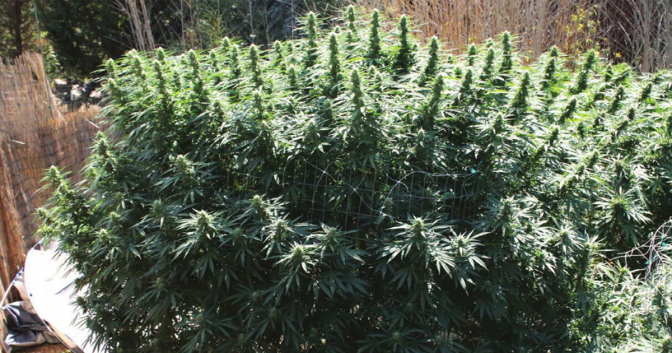Growing Pains: What Will Legalization Mean to California’s Cannabis Cultivators?

Traveling though Northern California these days and talking to growers, one hears everything from excitement to out-right dread. In November, voters will be asked whether they want to legalize cannabis. Prop 64 easily qualified for the ballot, and polls show it enjoys 60% support.
What’s not to support? Cannabis has already been legal in Colorado, Oregon, Washington and Alaska for several years, and the Earth has not stopped revolving around the Sun. At this point, what’s the big deal? Nevertheless, the hardworking growers in the Emerald Triangle have mixed feelings about Prop 64—the Adult Use of Marijuana Act (AUMA).
The apprehension many growers are feeling has its roots in the bill itself. Funded largely by Sean Parker of Napster and Facebook fame, AUMA, on its surface, seems like a no-brainer: Anyone over 21 may possess up to one ounce of flowers and cultivate up to six plants for personal use; concentrates are allowed, up to seven grams; the law removes any financial penalty for these amounts. Cannabis flowers have been decriminalized for years in California, with a $100 fine for possession of up to an ounce.
The fact that a member of the billionaire class is funding Prop 64 doesn’t impress old-school growers like Swami, who has his own Swami Select brand of sun-grown marijuana. “I just don’t trust that these gazillionaires are looking out for our best interests,” he says. Swami’s feelings are echoed by many others in a region that’s weathered government invasions, Child Protective Services raids, crop rippers and all the other challenges associated with decades of cultivating world-class cannabis. A strong commonly held belief is that legalization will just pave the way for large corporate interests to come in and dominate the industry— something that’s happening even under the current medical guidelines.
Adding further confusion is the fact that in 2015 California passed the Medical Marijuana Regulation and Safety Act (see “The MMRSA Effect” in Issue 16). The law goes into effect in 2018, and is designed to bring uniform statewide regulations to the massive and largely unregulated medical cannabis market. As growers scramble to comply with the upcoming regulatory environment, the looming specter of complete legalization has many of them bewildered.
“I’ve been farming weed in Mendocino for over 30 years, and now I have to spend many thousands of dollars to comply with a system that might ultimately exclude me anyway,” an exasperated grower named Nicole, who says her clients have included Barbra Streisand and Whoopi Goldberg, recently told me during my visit to Humboldt County.
The most common fear is that larger, better-funded players will be able to acquire the land, jump though all the regulatory hoops and ultimately produce cannabis for cheaper than the original farmers do. There’s an unprecedented land rush going on in Northern California. Prices have doubled or even tripled in areas that are prime cultivation spots, and many landowners are cashing in and leaving for Oregon or Washington, or even moving out of the country.
One of the chief concerns is that, even with a 64-page initiative, many rules regarding cultivation, production and distribution are opaque to non-lawyers. Even among the professional legal class, opinions differ. Most agree that there will definitely be a place for small-scale boutique, or craft, growers (at least for the first five years), but no one has any idea how large that niche will actually turn out to be. The smarter growers have been hard at work branding their farms and cannabis strains for the last few years.
As Swami walks through rows of towering cannabis plants, he explains how he helped found Flow Cana, a company that delivers high-grade medical cannabis, identified by both the strain and the farmer, to the Bay Area and Los Angeles. “We really saw that if we wanted to survive, we needed to create something distinct and different to make our ganja stand out,” he says. Innovations like these are essential for any grower trying to survive the coming changes.
The future of many small-scale cannabis growers in California is currently as uncertain as it was during the CAMP raids in the mid-1980s. Between the intense regulatory environment and the costs associated with compliance, and with the threat of larger companies dominating through economies of scale, the small grower does indeed have cause for alarm. But cannabis growers are some of the most adaptable and heartiest people. If Prop 64 passes, they’ll find a way to be part of California’s new Green Rush.
If you enjoyed this Freedom Leaf article, consider subscribing today!

